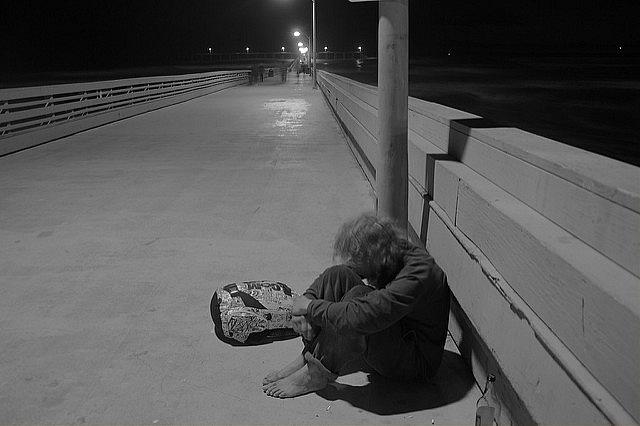Despite early success, San Diego homeless program struggles to expand

"Frequent flyer" is a term often used to describe a chronically homeless person whose medical and mental health needs lead to numerous ER visits and hospitalizations. After staying a few hours, or a few days, the person returns to the street and it's only a matter of time before they're back in an ambulence and back at the ER.
In 2011, the United Way of San Diego County launched a pilot program called Project 25. The goal was to identify the county's 25 most expensive homelessless people — in terms of emergency medical services and hospital stays — find them, and encourage them to enter housing. (The pilot eventually grew to 35 participants.) The housing followed the “housing first” model, which says a stable living environment is the necessary first step to helping someone deal with issues like addiction, chronic disease and mental illness.
Everyone in Project 25 was given an apartment, covered by a HUD voucher, and services either through county mental health or St. Vincent de Paul, a nonprofit homelessness-services provider.
The pilot lasted three years, ending in April 2014. It was an unequivocal success: In 2013 alone, Project 25 participants took 600 fewer ambulance rides, were in the ER 1,100 fewer times and spent nearly 1,000 fewer days in the hospital compared with the year before they entered the program. All this resulted in a savings of more than $2 million. None of the original Project 25 participants have returned to the street. Three participants died in their apartments, but all from natural causes.
Despite Project 25's effectiveness and a dire public health need for such a program — there are more than 1,300 chronically homeless folks living on San Diego streets — it's failed to expand in the way proponents had envisioned. Initially there was as assumption that hospitals would see the cost savings and agree to help fund the program because it reduced the burden of uninsured patients. But that was before the Affordable Care Act expanded insurance coverage. When I reported on Project 25’s funding dilemma in May 2014, St. Vincent de Paul had just begun to approach insurance companies, trying to convince them that they’d save money by paying for case management instead of repeat ambulance rides and hospital stays (and, in at least one case, repeat Life Flight rides). But it's been a tough sell: As of the beginning of December, only four insurers — representing a total of 17 patients — have signed contracts with St. Vincent de Paul.
My 2017 California Fellowship project will take a big-picture look at Project 25 and explore why it's not become part of San Diego's continuum of homeless services. Elected officials like to point to Project 25 as a success, but no one talks about the fact that the program has struggled to find sustainable funding.
I’d also like to check in on some of Project 25's first clients and see how they're doing. What can their experience tell us about the challenges of engaging folks who've been on the street, sometimes for a decade or more? I'd also like to explore what the Project 25 cohort can tell us about housing-as-healthcare and where the system falls short in fully embracing this concept.
A key question, of course — one that'll evolve over the next several months — is what impact might changes to the Affordable Care Act have on programs like Project 25 and the larger effort to address chronic homelessness.
[Photo by the Angry Photographer via Flickr.]

